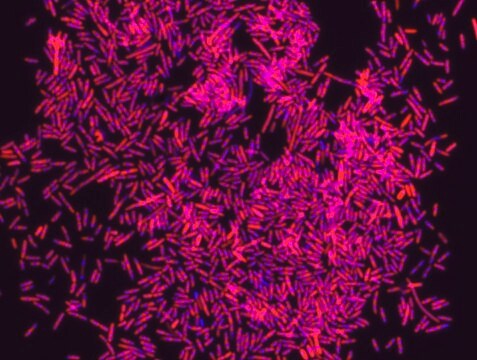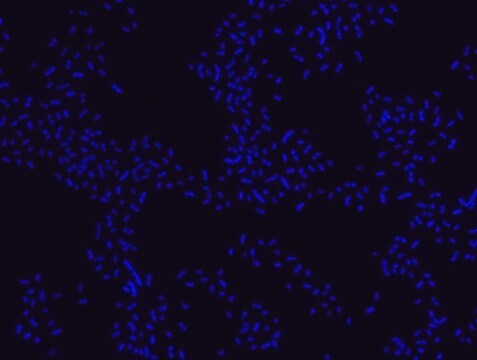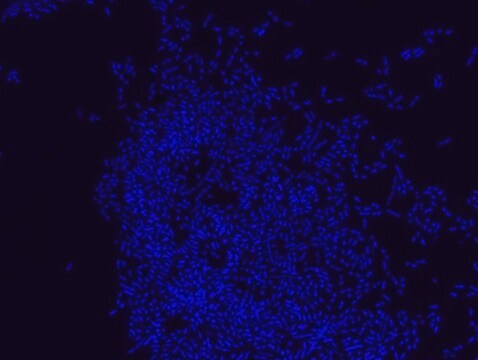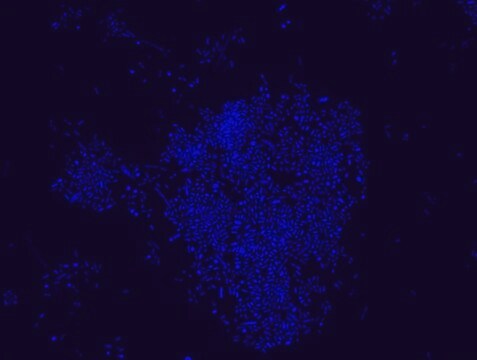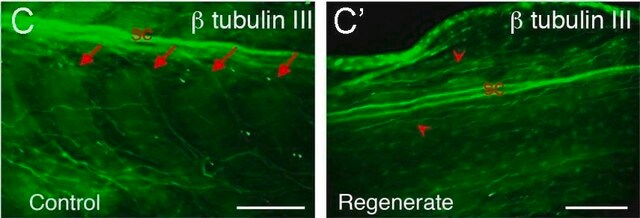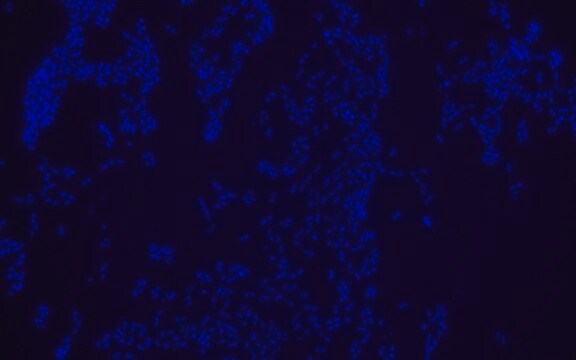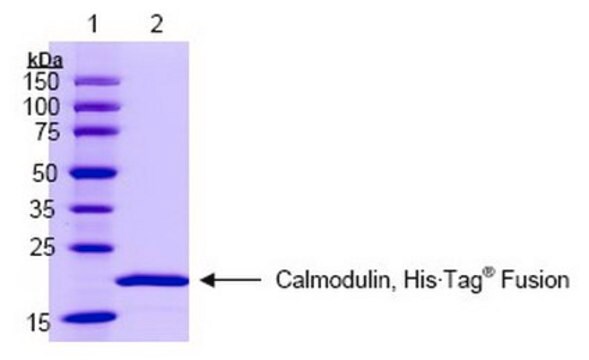Wszystkie zdjęcia(3)
Kluczowe dokumenty
MBD0047
Sonda FISH Enterococcus faecium - ATTO 488
Probe for fluorescence in situ hybridization (FISH), 20µM in water
Zaloguj sięWyświetlanie cen organizacyjnych i kontraktowych
About This Item
Kod UNSPSC:
41105500
NACRES:
NA.54
Polecane produkty
Poziom jakości
metody
FISH: suitable
fluorescencja
λex 504 nm; λem 521 nm
Warunki transportu
dry ice
temp. przechowywania
−20°C
Opis ogólny
Technika fluorescencyjnej hybrydyzacji in situ (FISH) opiera się na hybrydyzacji fluorescencyjnie znakowanej sondy oligonukleotydowej do określonej komplementarnej sekwencji DNA lub RNA w całych i nienaruszonych komórkach. Mikrobiologiczna FISH umożliwia wizualizację, identyfikację i izolację bakterii dzięki rozpoznawaniu rybosomalnego RNA również w próbkach niekulturowych. Technika FISH może służyć jako potężne narzędzie w dziedzinie badań mikrobiomu, umożliwiając obserwację natywnych populacji drobnoustrojów w różnych środowiskach mikrobiomu, takich jak próbki pochodzenia ludzkiego (krew i tkanki), ekologia drobnoustrojów (stałe biofilmy, systemy wodne) i rośliny. Zdecydowanie zaleca się uwzględnienie kontroli pozytywnych i negatywnych w testach FISH w celu zapewnienia specyficznego wiązania sondy będącej przedmiotem zainteresowania i odpowiednich warunków protokołu. Oferujemy sondy kontroli pozytywnej (MBD0032/33) i negatywnej (MBD0034/35), które towarzyszą konkretnej sondzie będącej przedmiotem zainteresowania. Sonda Enterococcus faecium specyficznie rozpoznaje komórki E. fa ecium,. E. faecium jest bakterią Gram-dodatnią i jest przyczyną różnych infekcji, w tym zapalenia wsierdzia, infekcji dróg moczowych, zapalenia gruczołu krokowego, infekcji w obrębie jamy brzusznej, zapalenia tkanki łącznej i infekcji ran, a także współistniejącej bakteriemii. Badania wykazały, że E. faecium jest wysoce oporny na wiele antybiotyków, a oporny na wankomycynę Enterococcus faecium (VRE) może być bezobjawowo przenoszony przez zdrowe osoby, co może utrudniać szpitalom próby kontrolowania rozprzestrzeniania się bakterii. W ciągu ostatnich dwóch dekad Enterococcus fa ecium stał się główną przyczyną wielolekoopornych zakażeń enterokokowych w Stanach Zjednoczonych. E. faecium charakteryzuje się wysoką opornością na antybiotyki, a ponad połowa jego patogennych izolatów wykazuje oporność na wankomycynę, ampicylinę i wysoki poziom aminoglikozydów.
Zastosowanie
Sonda do fluorescencyjnej hybrydyzacjiin situ(FISH), rozpoznaje komórki Enterococcus faecium
Cechy i korzyści
- Wizualizacja, identyfikacja i izolacja komórek E. faecium.
- Obserwowanie natywnych populacji komórek E. faecium w różnych środowiskach mikrobiomu.
- Specyficzna, czuła i niezawodna identyfikacja E. faecium w mieszanej populacji bakterii.
- Specyficzna, czuła i niezawodna identyfikacja nawet w przypadku niskiej liczebności E. fa ecium w próbce.
- FISH może uzupełnić metody wykrywania oparte na PCR, unikając wykrywania bakterii zanieczyszczających.
- Dostarcza informacji na temat morfologii E. faecium i pozwala na badanie architektury biofilmu.
- Identyfikacja E. faecium w próbkach klinicznych, takich jak tkanki nowotworowe i mózgowe (na przykład w utrwalonych w formalinie próbkach zatopionych w parafinie (FFPE)), ślina i jama ustna oraz sprzęt medyczny, taki jak implanty dentystyczne i protezy głosowe.
- Zdolność do wykrywania E. faecium w jego naturalnym środowisku jest niezbędnym narzędziem do badania interakcji gospodarz-mikrobiom.
Ta strona może zawierać tekst przetłumaczony maszynowo.
Kod klasy składowania
12 - Non Combustible Liquids
Klasa zagrożenia wodnego (WGK)
WGK 1
Temperatura zapłonu (°F)
Not applicable
Temperatura zapłonu (°C)
Not applicable
Wybierz jedną z najnowszych wersji:
Certyfikaty analizy (CoA)
Lot/Batch Number
It looks like we've run into a problem, but you can still download Certificates of Analysis from our Dokumenty section.
Proszę o kontakt, jeśli potrzebna jest pomoc Obsługa Klienta
Masz już ten produkt?
Dokumenty związane z niedawno zakupionymi produktami zostały zamieszczone w Bibliotece dokumentów.
Nasz zespół naukowców ma doświadczenie we wszystkich obszarach badań, w tym w naukach przyrodniczych, materiałoznawstwie, syntezie chemicznej, chromatografii, analityce i wielu innych dziedzinach.
Skontaktuj się z zespołem ds. pomocy technicznej